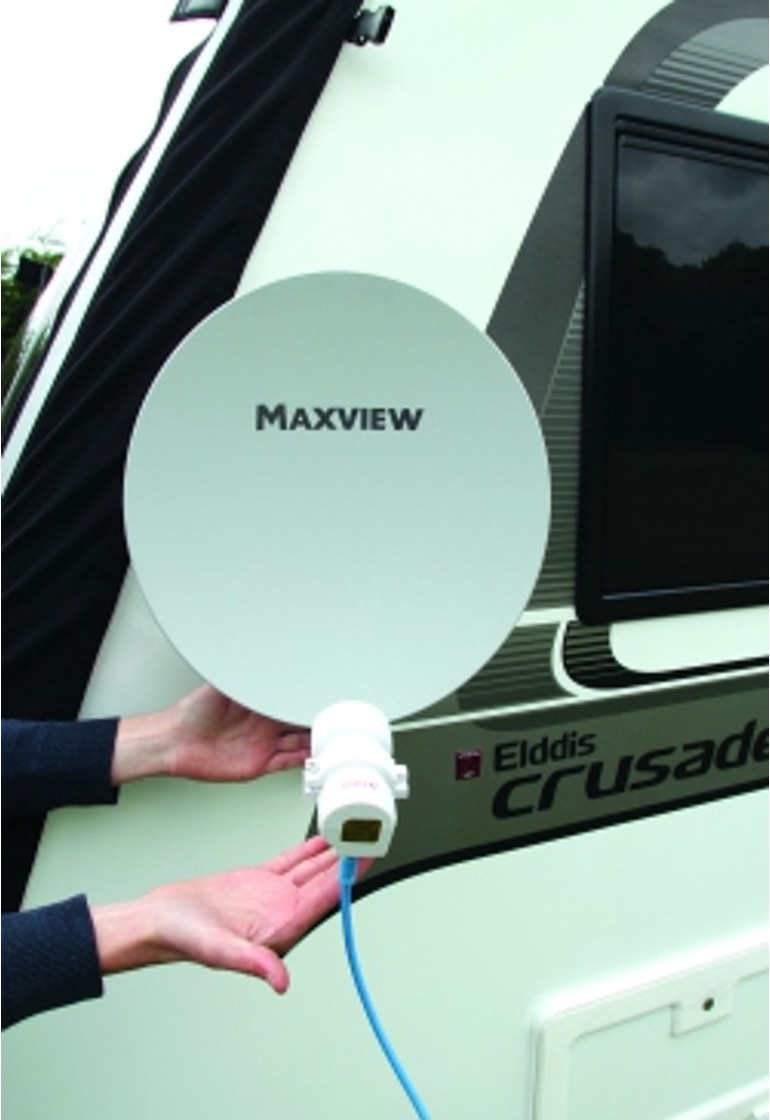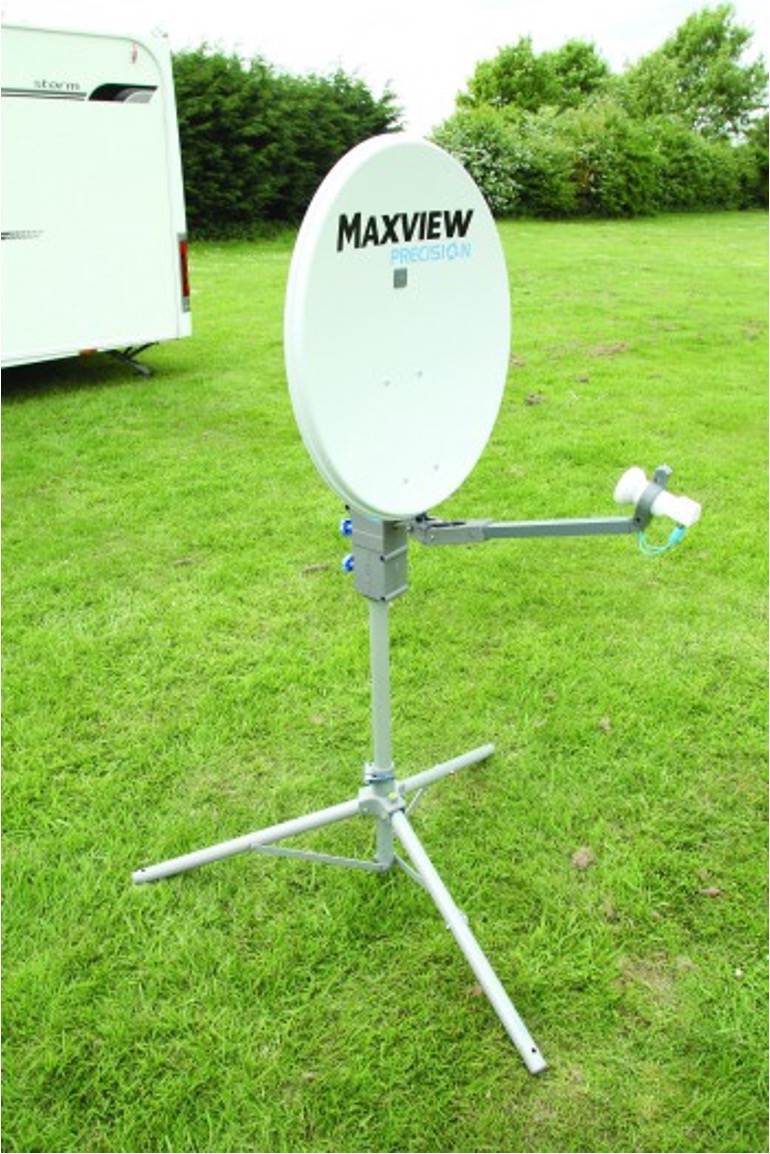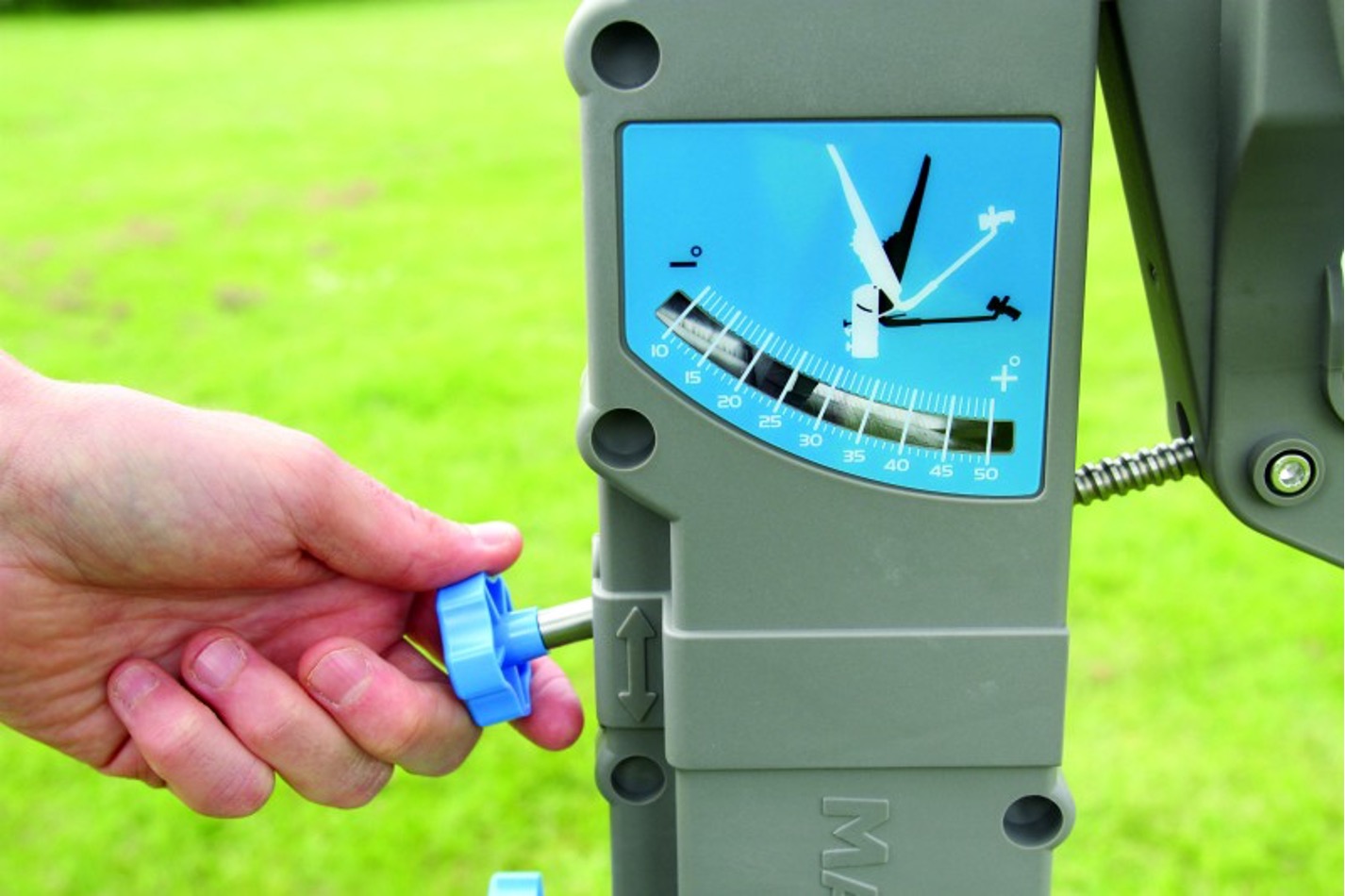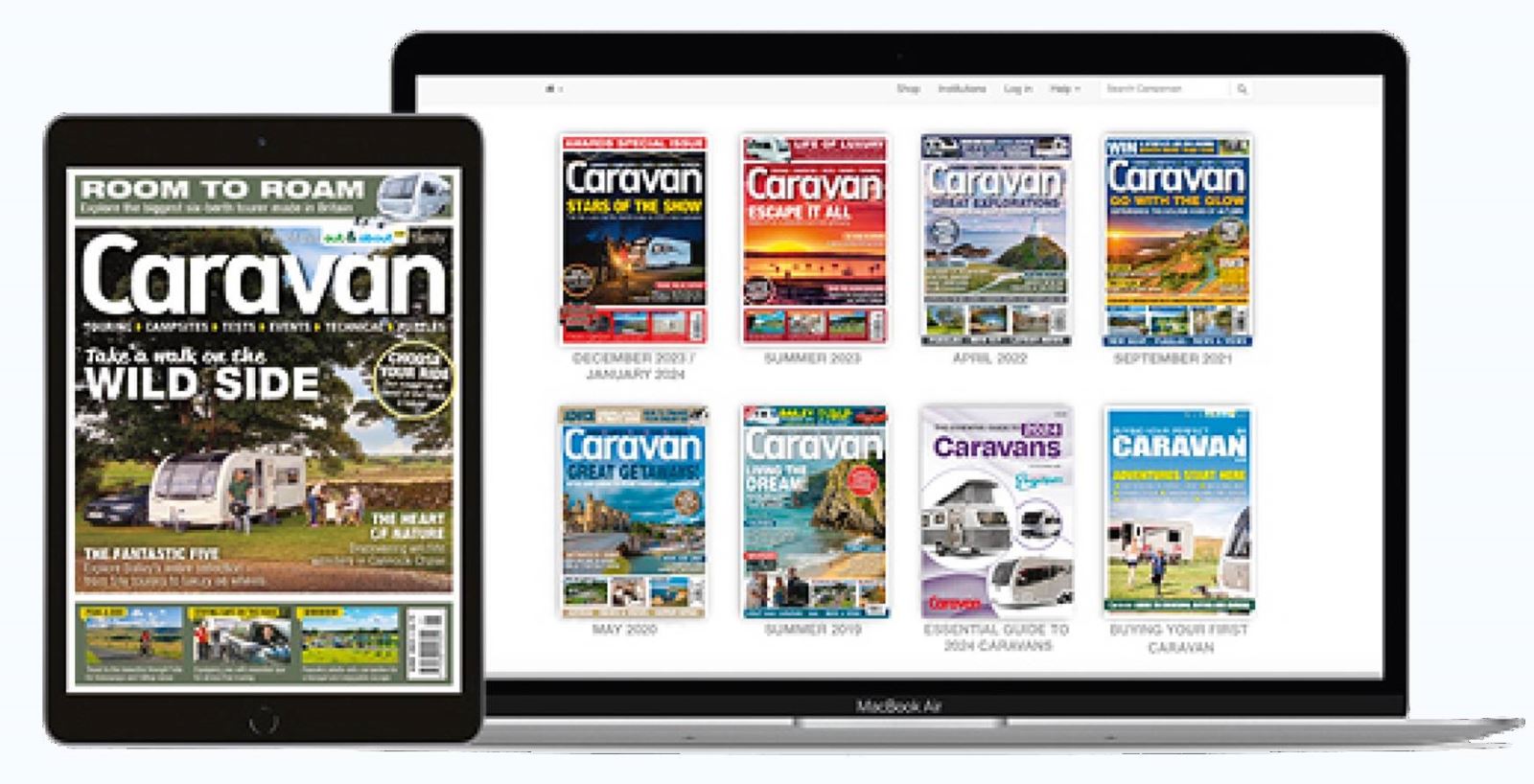Caravan satellite dish guide: everything you need to know
Few holiday types can rival the escapism of the humble caravan, but we all love to sit back and relax in front of the TV from time to time
However, finding a good TV signal can occasionally be frustrating, something that a caravan satellite dish can overcome.
We have more TV choices than ever, from online streaming services to bollard-mounted coax plugs, although different destinations – especially those overseas – can play havoc with our viewing pleasure. Here's how a caravan satellite system can ease our TV woes.
Page contents
- What you need to know about caravan satellite systems
- Things to consider when using a portable satellite system
- FAQs
- Final thoughts
- About our magazines
Words by Lee Davey
What you need to know about caravan satellite systems
What will you need
- A caravan satellite system
- A satellite decoder. Many 12V TVs have a built-in decoder.
- A TV
- The relevant cables
You may also need:
- A satellite finder app or a compass. If you use a compass, you'll also need direction and elevation angle.
- A satellite signal meter
How does a portable satellite dish work?
The Earth is surrounded by orbiting satellites, some of which bounce TV channels back to Earth. In Britain, we mainly use Astra 2, which is in a geostationary orbit (it moves with the Earth's rotation) in the southern sky. Astra 1, Astra 3, Hotbird, and Thor satellites are also popular choices.
A satellite dish focuses the radio waves from the satellite onto its LNB (low noise block) downconverter. This downconverter converts the waves into a signal and sends them down a cable to a receiver unit, which decodes the signal for your TV.
Types of satellite dishes
There are three main types of caravan satellite dishes:
Suction-mounted satellite system:

(photo courtesy of Maxview)
As the name suggests, suction mounts attach this type of satellite dish to the side of your caravan.
This allows the dish to be positioned at many points on the caravan and, importantly, out of harm's way.
The cable can then be run to an external point or routed through a window. This type of dish costs around £150.
Tripod-mounted satellite system:

(photo courtesy of Maxview)
TThe satellite dish is mounted on a tripod, which can be positioned accordingly.
As with a suction-mounted system, the cable runs to an external point or through a window. Dish sizes may be larger for tripod-mounted systems, which could, in turn, receive signals from further afield.
Cost-wise, a tripod-mounted satellite system is approximately £250.
Fully automatic roof-mounted satellite system:

(photo courtesy of Maxview)
These are fit-and-forget systems that are always ready to use.
Being roof-mounted, cables are permanently routed out of sight, with many systems offering a 'press and go' service, where pre-programmed satellites are found at the touch of a button.
Being permanent fixtures, the weight of the antenna (approximately 10kg, but this does vary between units) must be subtracted from your payload. This type of system can cost upwards of £1,400.
What is the best satellite dish for a caravan?
This is primarily a matter of personal preference and budget. UK travellers may find a smaller suction-mounted unit suitable for occasional use, while hardy European caravanners will need a larger dish.
Do I need a satellite dish for a caravan?
If you like to watch TV while on holiday in your caravan, satellite systems are a worthy alternative to streaming services. After the initial investment, they are also cheaper to use.
They are great for European travellers as UK channels can be enjoyed without the complications of data roaming.
How to fit a caravan satellite dish to your caravan
The three main types of satellite dishes give each caravan owner options. Suction-mounted and tripod-mounted systems are 'stand-alone' and can be used when required or moved to another caravan. A roof-mounted system is a doddle to use but will be fitted permanently.
How to find TV satellite signal in your caravan
- Assemble the satellite dish and tripod/suction mount
- Point the dish due south. A compass or phone app can be used
- Connect the cable to the LNB
- Connect the other end of the cable to the TV (if it has a built-in decoder) or to the satellite decoder unit. If necessary, connect the decoder to the TV
- Point your dish at the relevant satellite using a free app such as DishPointer or SatFinder Lite. These apps use 'augmented reality' to map each satellite. A compass can be used, but it tends to be less accurate
- Set to the correct elevation. The Dish Align app can help
- Fine-tune satellite reception with a signal finder. They cost £20 or so from all good retailers
Things to consider when using a portable satellite system

(photo courtesy of Maxview)
A satellite dish needs a clear line of sight to receive a signal, so tall buildings and trees will likely obscure this. If you use a tripod or suction-mounted system, ensure they are fixed or pegged securely in inclement weather.
Roof-mounted systems are often easier to use and can offer increased reliability should the weather turn, but the cost reflects this.
FAQ
How do I find satellite TV stations?
All new Avtex TVs have a preloaded channel list, so your TV will work once a signal is found. If you use a TV with no preloaded channels, locate the satellite first and scan for new channels.
Can I use my Sky box?
Before Sky Q, the answer was yes. All previous Sky boxes are compatible with Maxview systems; plug them in like a free-to-air receiver. However, Sky Q receivers work differently, therefore the standard range of automatic systems is incompatible.
Consequently, Maxview has launched Sky Q-compatible Precision (tripod-mounted manual system) and a Sky Q-compatible Target (roof-mounted automatic system). Alternatively, if you have a manual or portable system, you can upgrade the LNB.
What size caravan satellite dish do I need?
A 40cm dish is sufficient for the UK and, possibly, the very edge of northern France. A 55cm satellite dish extends the coverage to northern France. The middle of France requires a 65cm dish, 75cm covers most of France, and the French-Spanish border is achievable with an 85cm dish.
How much elevation is needed for a caravan satellite dish?
In the UK, the Astra 2 satellite is between 21 degrees (Scotland) and 28 degrees (southern England).
How much is a satellite dish for a caravan?
A good-quality, branded, suction-mounted system for a caravan will likely cost £150, with a larger tripod-mounted satellite system being around £250. Roof-mounted systems are upwards of £1,400.
Final thoughts
Caravan satellite systems allow folks to watch their favourite TV shows from destinations across the UK and Europe. Once purchased, they won’t eat into your phone’s data plan or attract additional charges when overseas.
They do, however, require line of sight to the satellite, which trees and tall buildings can block. Choose a dish type based on your future travel plans, and you’ll be able to receive satellite TV from within the UK, France, or Spain.
Get Caravan magazine from just £19.99

Caravan magazine has been inspiring caravanners for more than 80 years! Every monthly issue is packed with caravan travel inspiration, the best sites to stay on, caravan road tests, reviews and buying guides, plus top technical advice.
Caravan’s fully searchable digital library gives you access to the latest issues, plus every edition of Caravan since February 2013.
Expert Caravan advice to your door!

Caravan magazine has been inspiring caravanners for more than 80 years! We have grown to become a leading authority on caravans, the caravan industry, caravan lifestyle, campsites and caravan travel destinations. We know what our readers want – and that's to make the most of their caravans and their holidays!
Want to know more about Caravan magazine?
About Caravan magazine








Recent Updates
Caravan chassis: all you need to know
A caravan chassis is a skeletal frame that runs from front to back, supporting the body and linking the entire structure to the axle or axles ...
Caravan cooking recipes
Caravan cookery inspirational ideas. No need to stress out in the kitchen with these quick and easy ...
Caravan insurance: all you need to know
Navigating the world of caravan insurance can feel like a daunting task. Fear not, as this comprehensive ...
Caravan tyres: everything you need to know
In this tyre guide, we'll explain everything you need to know about looking after your caravan tyres and ...
Caravan solar panels: all you need to know
Whether you dream of roaming off-grid or just fancy reducing your carbon footprint, fitting solar panels to ...
Caravanning with dogs: all you need to know
Caravan holidays with dogs are a joy for lots of reasons. Firstly, many people choose to buy a caravan ...
How to set up a caravan: all you need to know
Setting up your caravan on a campsite pitch is just a sequence of actions. They’re second nature to ...
Caravan showers: all you need to know
In this guide, we’ll discuss the different types of showers, how they work, and how to fit an external shower ...
Towing a caravan: all you need to know
Towing a caravan may seem daunting initially, but a few simple tips can make the journey enjoyable and ...
Towbars & towballs: all you need to know
Flange, detachable, swan neck, retractable – towbar technology choice is bewildering. Don’t worry. We’ll ...
Other Articles
Caravan WiFi: everything you need to know
Caravan holidays are the ultimate way of getting away from it all, although we sometimes need a link to the outside world ...
Buying a caravan: what you need to know
Let us guide you through some of the complicated things to think about when first looking at buying a ...
Caravan awnings: a buyers' guide
Caravan awnings are a fantastic addition to any caravan as they are one of the simplest, quickest and most ...
Caravan electrics: avoid tripping out
All caravan owners have overloaded their mains supply at some time. Here’s how to master caravan electrics ...
Caravan heating systems: a quick guide to caravanning warmth
When winter is here, you’ll be glad of a decent caravan heating system if you’re out touring. Here’s how the ...
Caravan damp: a complete guide
There's little more guaranteed to strike fear into the heart of a caravan owner than the word 'damp'. But if ...
Caravan jockey wheels: the definitive guide
A well-functioning caravan jockey wheel can make all the difference to manoeuvring away from the towcar, ...
Caravan bike racks: a complete guide
Exploring the beautiful surroundings while on a caravan trip is undeniably one of the greatest joys of the ...
The ultimate guide to caravan layouts
Choosing the right layout or floorplan of your caravan is an all-important part of the buying process – find ...
A guide to seasonal caravan pitches
Our in-depth guide to finding and securing seasonal caravan pitches on your favourite campsite ...